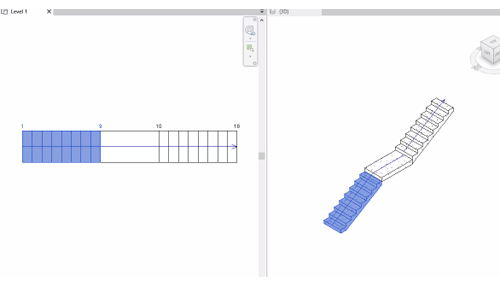Duplicate an existing stair and modify type properties and instance properties to match the built condition of the stair.

This video demonstrates the following:
- Duplicate a stair type.
- Change properties to notched end conditions.
- Change start and end conditions to create notched ends.
Transcript
Several construction types are available for stair creation in Revit. In this example, you duplicate an existing stair type to create a new construction type.
Select the stair, and on the Edit panel, click Edit Stairs to access stair edit assembly mode.
Notice that if a stair component, such as a run or landing, is not selected, the properties for the stair assembly display. In the Type Selector, change the stair type from an Assembled Stair to a Precast Stair.
To create a new precast stair type, click Edit Type to access the type properties, and duplicate the existing type. This stair type specifies a notch connection method for run ends.
This new stair type requires a different run construction type. Select the Run Type value, and click the browse button to open the Run Type Properties dialog.
Duplicate the run type as you did for the stair, and change the Structural Depth value for this new type.
Using the same method, you can access the landing type and support type properties from the Stair Type properties, and modify the construction for these components as well.
In the drawing area, select the lower run, and on the Properties palette, clear Begin with Riser and End with Riser. Editing the Extend below Base property allows you to also see the notch connection on the lower end of the run.
Clear the Begin with Riser and End with Riser properties for the upper run as well.
Changing the Begin with Riser and End with Riser options will change the height of the run. You can use the direct manipulation controls to add or remove steps as required to maintain the original height of the stair.